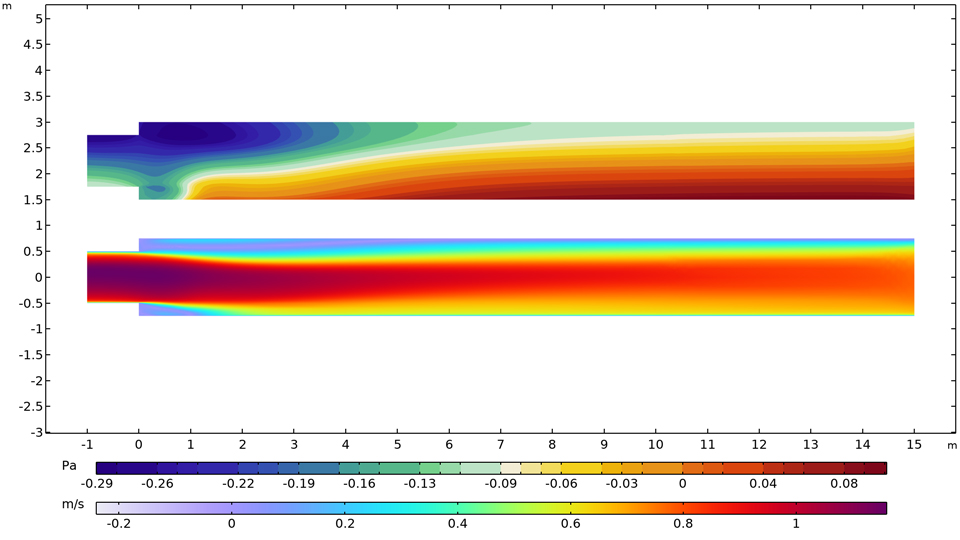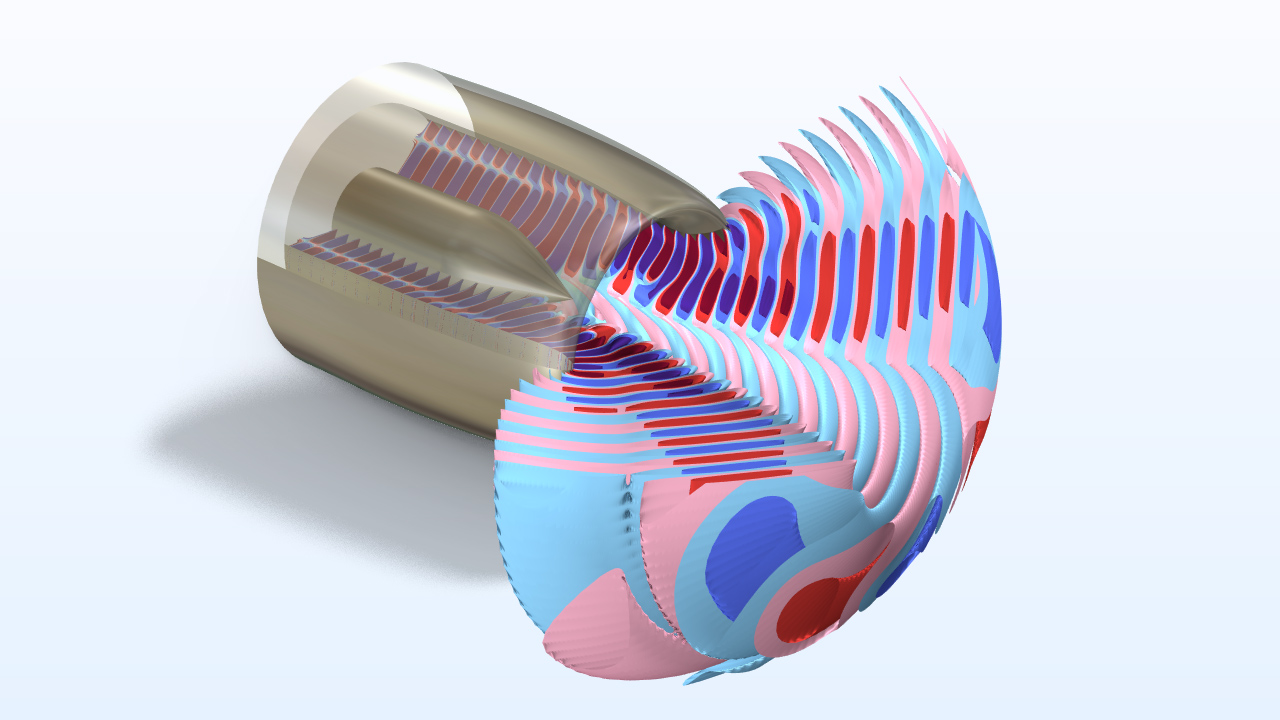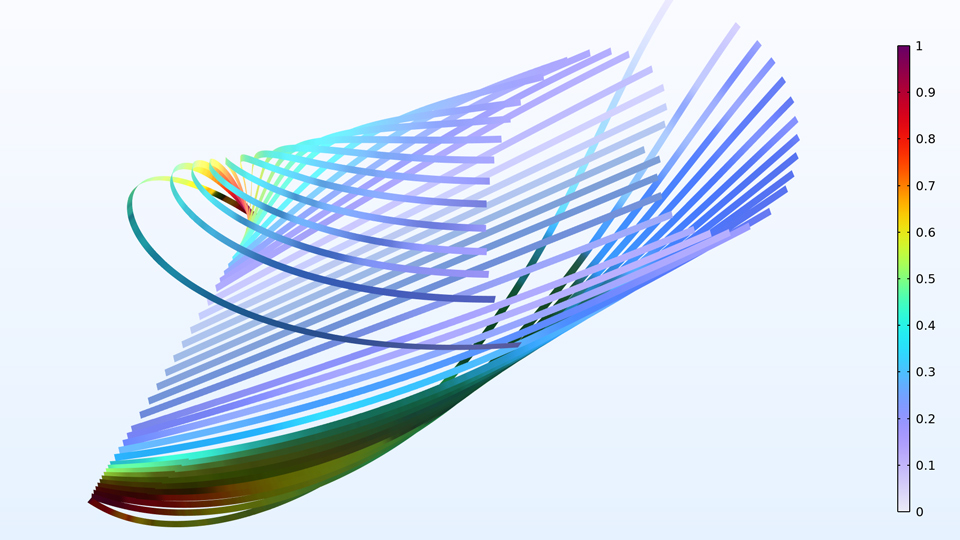CFD Module Updates
For users of the CFD Module, COMSOL Multiphysics® version 6.4 introduces improved transient turbulence predictions, more accurate near-wall turbulence modeling, and high-fidelity simulation of flow involving chemical reactions. Learn more about these updates below.
Scale-Adaptive Unsteady Turbulent Flow Simulations
The Turbulent Flow, SST interface now supports scale-adaptive simulation (SAS) by incorporating the von Kármán length scale into the turbulence model. This approach resolves a broader range of turbulent scales and provides highly detailed flow fields. SAS can be applied in multiphysics contexts such as fluid–structure interaction, reacting flow, nonisothermal flow, and flow-induced noise, delivering more accurate and insightful results.
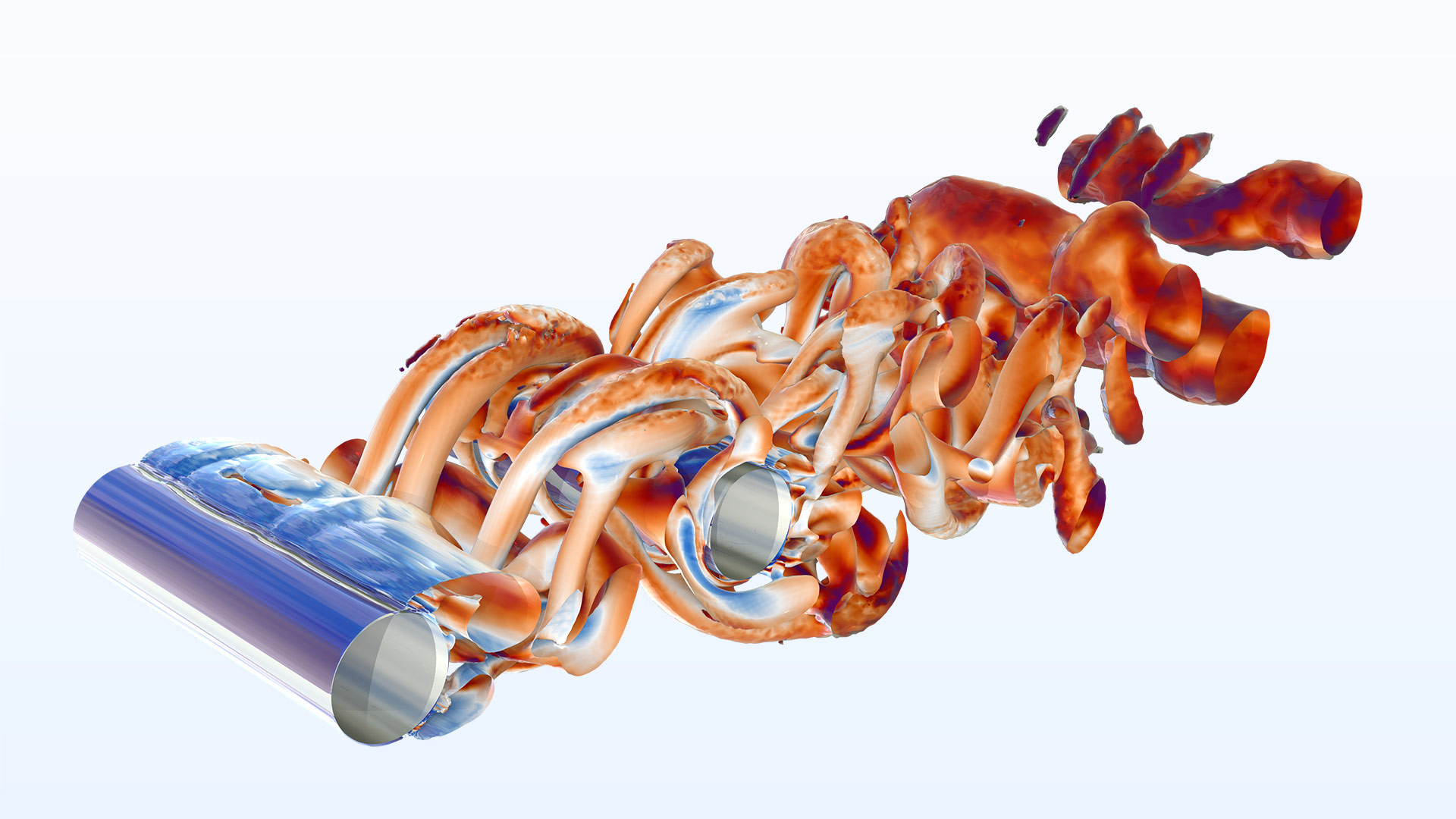
Elliptic Blending R-ε Turbulence Model with Improved Near-Wall Treatment
By blending expressions for the pressure–strain correlation and the turbulence viscous dissipation rate in the near-wall region with those in the bulk, the new Turbulent Flow, Elliptic Blending R-ε turbulence model provides accurate results for the Reynolds stresses close to walls without compromising the behavior elsewhere.

LES for Reacting Flow
The new Reacting Flow feature with large eddy simulation (LES) brings unprecedented accuracy to the modeling of turbulent reacting systems. By coupling LES with the Chemistry, Chemical Species Transport, and Heat Transfer in Fluids interfaces, it is possible to capture the detailed interplay of mixing, heat transfer, and chemical reactions in gases and liquids. The approach accounts for heat of reaction, enthalpy diffusion, and mass fluxes, while residual-based LES modeling enhances predictions of heat and mass transport. With temperature-dependent fluid and chemical properties included, this functionality provides highly realistic insights into concentration, reaction rate, and temperature fields. Whether studying catalytic reactors or complex mixing processes, LES-based reacting flow models help reveal critical details that traditional turbulence models may miss.
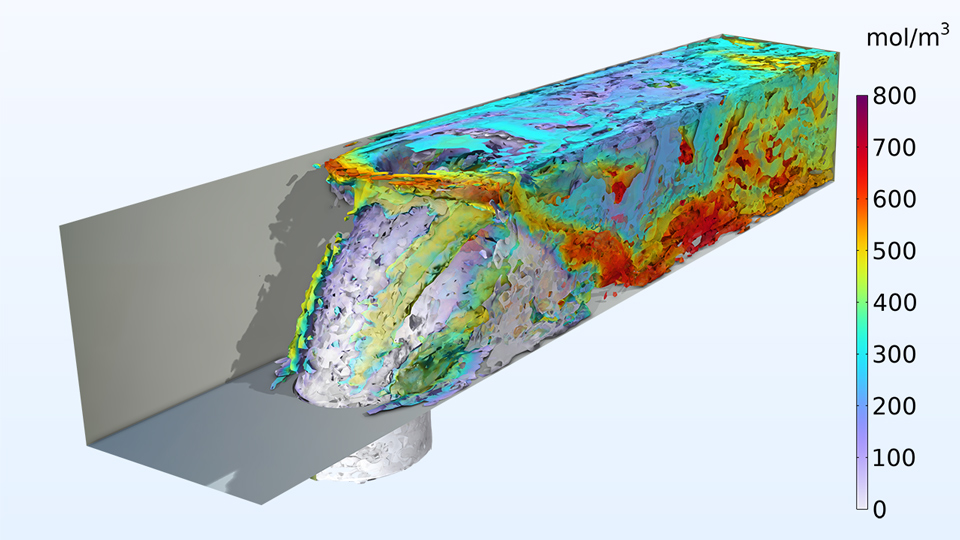
Rotating Frame Feature as an Alternative to Rotating Domains
The new Rotating Frame feature expresses fluid flow equations relative to a stationary or time-dependent rotating frame, providing an inexpensive alternative to rotating domains without having to add equations. It also offers options for using a reduced pressure formulation or including the hydrostatic pressure approximation for the centrifugal force.
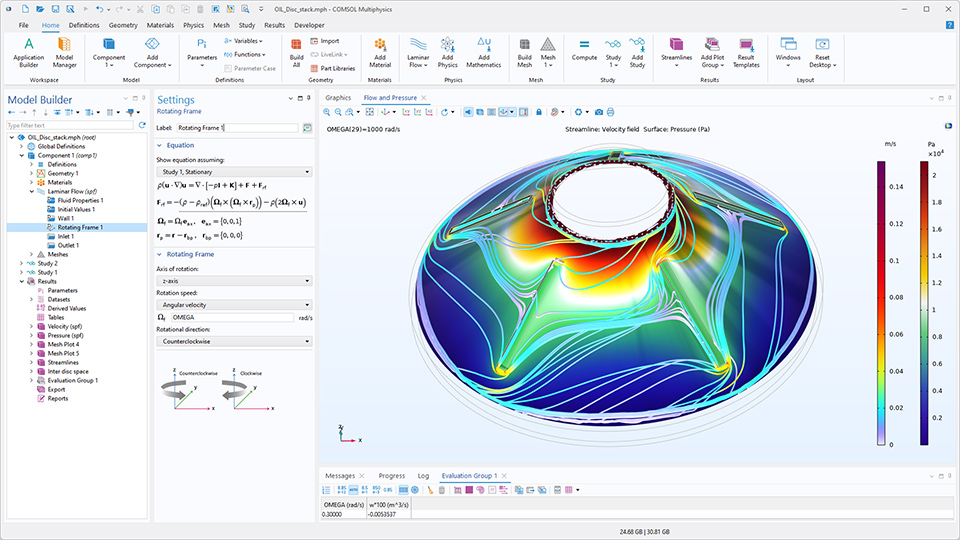
Algebraic Turbulence Models for High Mach Number Flows in Rotating Machinery
The L-VEL and Algebraic yPlus turbulence models are now available for high Mach number flow in rotating machinery. These algebraic models are primarily used to generate optimal initial conditions for more advanced turbulence models, improving convergence and providing better starting points for time-dependent simulations, for example, when simulating turbomachinery.

CGNS Flow Data Import and Aeroacoustics
Aeroacoustic and convected acoustic simulations have been improved with several important new features. CFD data stored in the CGNS file format can now be imported into COMSOL Multiphysics® using the new CFD Data (CGNS) function together with the new Imported Fluid Flow interface. This combination ensures that the data is imported and mapped consistently to the computational mesh. Additionally, the new interface ensures a seamless integration with the existing Background Fluid Flow Coupling and Aeroacoustic Flow Source multiphysics couplings and mapping studies.
Periodic Condition
A new Periodic Condition feature has been added to the Darcy's Law and Richards' Equation interfaces to easily enforce periodicity for the flow between two or more boundaries. In addition, it is possible to create a pressure difference between source and destination boundaries, either by specifying the pressure jump directly or by prescribing a mass flow. The periodic condition is typically used to model representative volume elements and compute effective properties for use in homogenized porous media.
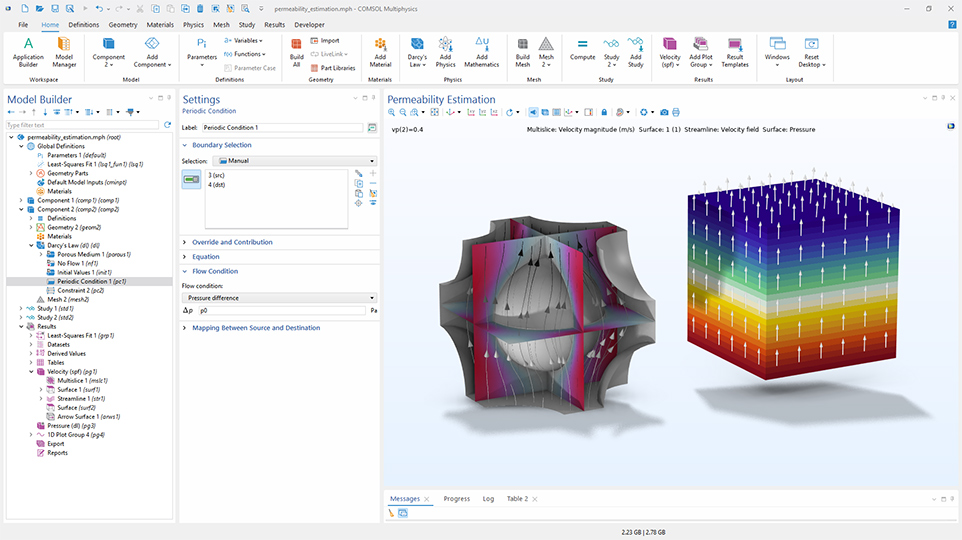
Pressure Jump Option for the Free and Porous Media Flow Coupling
The Free and Porous Media Flow Coupling has a new option to include a pressure jump across the free–porous boundary. This makes it possible to model, as examples, the osmotic pressure at a semipermeable membrane supported by a porous spacer material or a pressure jump due to capillary pressure in the case of multiphase flow.

Marangoni Effect Driven by Concentration Gradients
For microfluidic devices and processes, the classical example of the concentration-gradient-driven Marangoni effect is now included in the Free Surface and Fluid–Fluid Interface features. This functionality enables the modeling of surface-tension-driven phenomena such as the "tears of wine".
New Tutorial Models
COMSOL Multiphysics® version 6.4 brings the following new tutorial models to the CFD Module.
Production of Antibody–Drug Conjugates in a Stirred Tank Reactor*
A tank bioreactor with a four-blade stirrer modeled using turbulent reacting flow. The concentration of the conjugated antibody produced in the synthesis is shown using isosurfaces and contours.
*Requires the Chemical Reaction Engineering Module
Reverse Osmosis Water Desalination
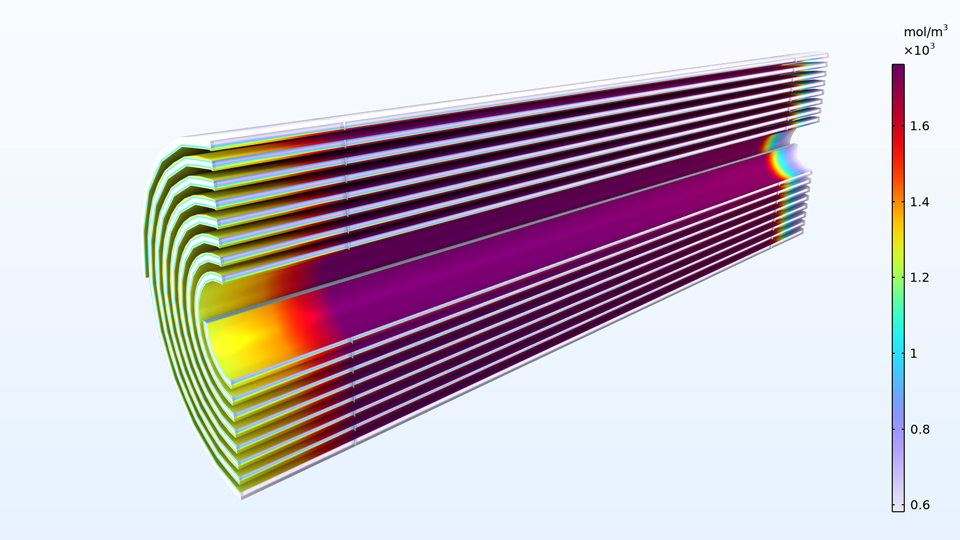
Axially Rotating Pipe and Swirling Jet Turbulent Flows
Spanwise Rotating Turbulent Channel Flow
